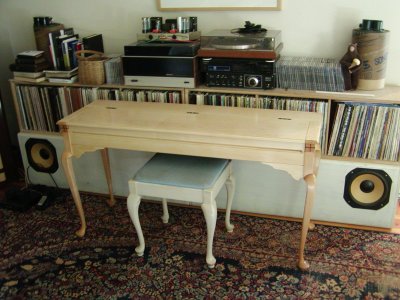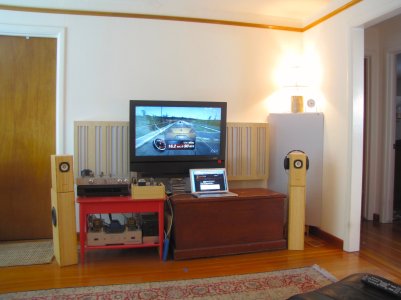Paul Joppa
Moderator
Sure. It's a long-ish story though ...Hank Murrow said:Dear Paul Joppa;
Could you explain what your "bridged T" network does for the new speaker?
I am sure there are many on our Forum who would be interested in how you developed it. PB says it works a treat!
I hope to hear it myself in late June.
Cheers, Hank in Eugene
First, the woofers are Zobeled to give them a constant impedance with frequency. (That's a simplification; the lower woofer is cut out so only the upper one is active in the crossover region - but the end result is close to 8 ohms in the audio band.)
The woofer itself has a resonance at a bit over 5kHz, with about a 4dB peak. Above the resonance it falls at 12dB per octave. By using a suitable notch filter, that is made to be a 6dB/octave roll off from 2800Hz to around 10kHz. The bridged-T is a form of notch filter that maintains constant input impedance at all frequencies, which is needed for the crossover itself to work into. It has 4 resistors, 2 caps, and 2 inductors - more complicated than the usual RLC notch.
The woofer crossover combines with the 6dB/octave to give something very close to a 4th order Linkwitz-Riley function at the 2800Hz crossover.




